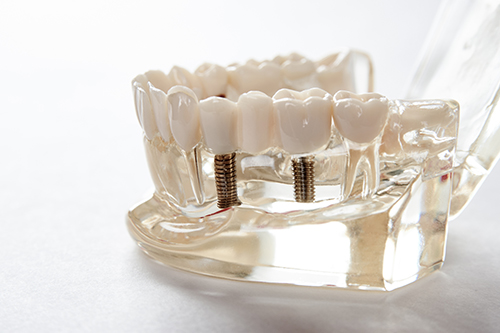
Getting a dental bridge at Oyster Point Dental involves several steps, and it is a common dental procedure used to replace one or more missing teeth. Here's an overview of the process:
Initial Consultation:
- Schedule an appointment with our dentist to discuss your dental needs and determine if a dental bridge is the right solution for you.
- During the consultation, your dentist will examine your oral health, take X-rays, and discuss your options.
Treatment Planning:
- If a dental bridge is deemed suitable, our dentist will create a treatment plan tailored to your specific needs.
- You will discuss the type of bridge (traditional, cantilever, Maryland, or implant-supported) and the materials used (such as porcelain, ceramic, or metal) based on your preferences and clinical requirements.
Tooth Preparation (if needed):
- In some cases, the adjacent teeth (abutment teeth) need to be prepared to support the bridge. This involves reshaping these teeth to make space for the bridge crowns.
- Local anesthesia is typically administered to numb the area before tooth preparation.
Impressions:
- After tooth preparation (if necessary), your dentist will take impressions of your teeth. These impressions are used to create a custom-fit bridge in the dental laboratory.
Temporary Bridge:
- While your permanent bridge is being fabricated, our dentist may place a temporary bridge to protect the prepared teeth and maintain aesthetics and function.
Bridge Fitting and Adjustment:
- Once the permanent bridge is ready, you will return to the dentist's office for its placement.
- Our dentist will check the fit, color, and alignment of the bridge, making any necessary adjustments to ensure it fits comfortably and looks natural.
Bridge Cementation:
- After final adjustments, our dentist will use dental cement to bond the bridge securely to the abutment teeth. If it's an implant-supported bridge, it will be attached to the dental implants.
Post Placement Care:
- Our dentist will provide instructions on how to care for your new bridge. This typically includes proper oral hygiene practices and dietary guidelines.
Follow-Up Appointments:
- You may need to schedule follow-up appointments to ensure the bridge is functioning correctly and to address any concerns or discomfort.
Let’s not forget the basics of good dental care. It's essential to maintain good oral hygiene by brushing, flossing, and visiting your dentist regularly for check-ups and cleanings to prolong the life of your dental bridge. Keep in mind that the exact process may vary depending on your individual case and the specific type of bridge you are getting. Our team of dental care professionals will provide you with personalized guidance throughout the procedure.
Contact Oyster Point Dental to schedule an appointment today.





